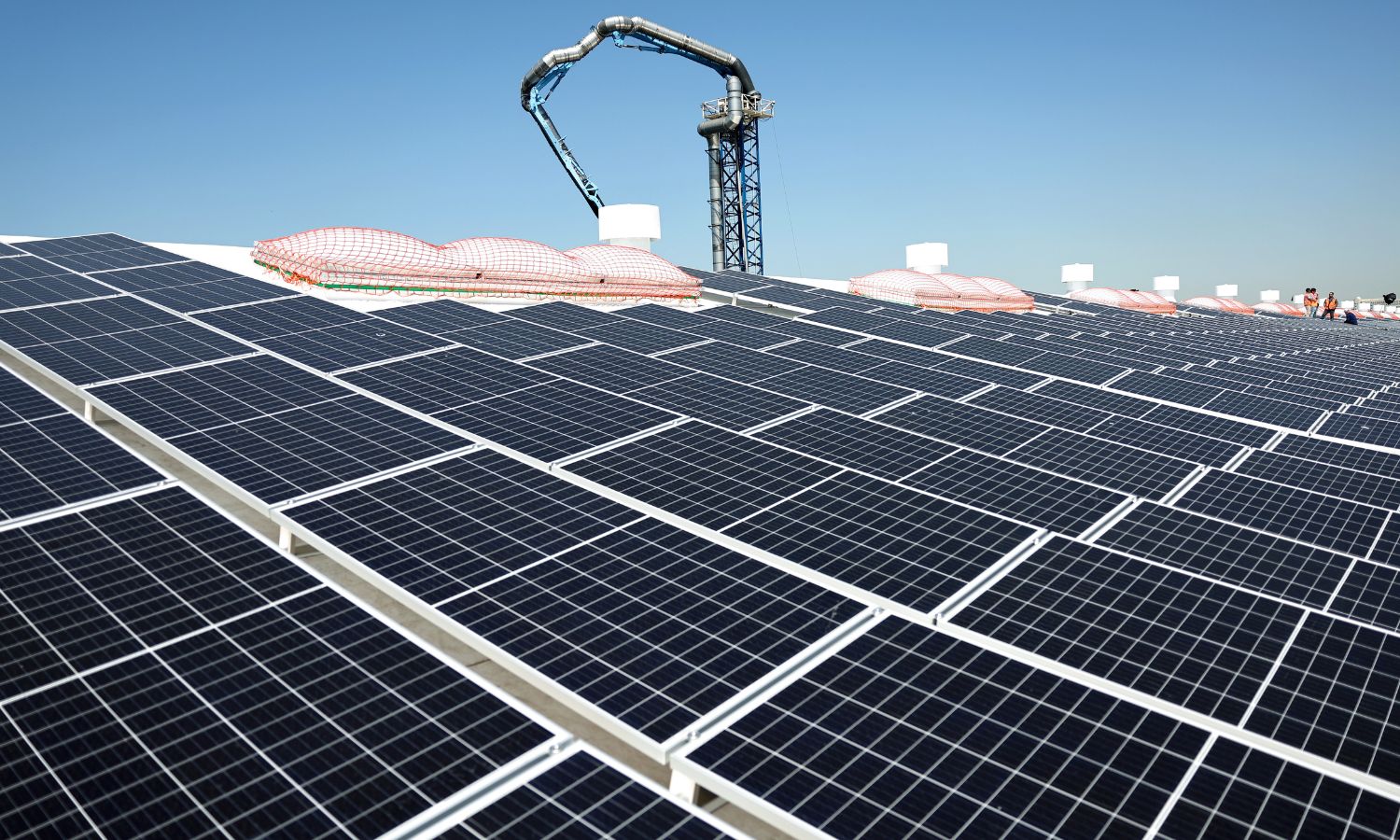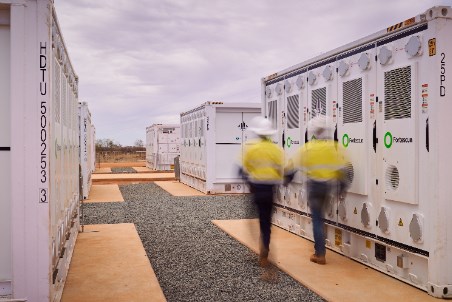UK green power surges with record approvals for new renewable energy capacity – Financial Times

UK Progress on Sustainable Development Goals through Renewable Energy Expansion
Advancing SDG 7: Record Growth in Clean Energy Capacity
A report on the United Kingdom’s energy sector indicates significant progress towards achieving Sustainable Development Goal 7 (Affordable and Clean Energy). Analysis of government data from the second quarter of the year reveals a record-breaking expansion in planned renewable energy capacity.
- Approved Capacity: Over 16.1 gigawatts (GW) of new renewable energy capacity received planning permission.
- Number of Projects: This capacity is distributed across 323 individual projects.
- Year-on-Year Growth: The approved capacity represents a 195% increase compared to the same quarter in the previous year.
This momentum is a critical step in increasing the share of renewable energy in the global energy mix, a key target of SDG 7.
Government Commitment to SDG 13: Climate Action and Policy Framework
The UK government’s policy actions underscore a strong commitment to SDG 13 (Climate Action). The surge in approvals aligns with a national strategy to decarbonise the power sector and combat climate change.
- National Target: A primary policy objective is to have 95% of Britain’s power generation be carbon-free by 2030.
- Planning Reform: Ministers are actively working to streamline planning processes to accelerate the deployment of green infrastructure, addressing complaints from developers about bureaucratic delays. This includes considering reforms to mitigate blockages based on environmental concerns for nationally significant projects.
- Project Approvals: Recent government actions include the approval of several solar farms and the large-scale Berwick Bank offshore wind project, directly contributing to the nation’s climate action targets.
Building Sustainable Infrastructure (SDG 9) and Overcoming Challenges
While progress is substantial, challenges remain in developing the resilient and sustainable infrastructure required by SDG 9 (Industry, Innovation, and Infrastructure). Key obstacles to translating planning approvals into operational assets include:
- Delays in securing grid connections for new projects.
- Legal challenges initiated by local opposition groups.
The government’s efforts to overhaul the planning system are intended to address these impediments and foster an environment conducive to rapid infrastructure development.
The Critical Role of Energy Storage in Achieving Sustainable Energy Systems
Integral to the success of SDG 7 is the development of reliable energy infrastructure. A significant increase in planning applications for battery energy storage systems (BESS) highlights the industry’s response to this need.
- Application Surge: Over 100 planning applications for BESS were filed between April and June, totaling 8.4 GW of capacity—more than double the figure from the previous year.
- National Requirement: To support a grid dominated by intermittent renewables, the government estimates a need for 23-27 GW of battery storage by 2030, a substantial increase from the current 6 GW.
- Industry Pipeline: Over the past year, applications for 30 GW of storage capacity across 400 schemes have been submitted, indicating a robust pipeline to support the clean energy transition.
As stated by Energy Minister Michael Shanks, electricity storage is “vital” for utilizing renewable energy effectively, enhancing energy security, and ensuring grid stability.
Economic and Market Drivers Supporting the Clean Energy Transition (SDG 8)
The growth in the renewable sector, particularly in energy storage, is fostering economic growth and creating opportunities aligned with SDG 8 (Decent Work and Economic Growth). Several factors are attracting investment and driving development:
- Favourable Market Structure: The design of Britain’s energy markets provides strong commercial incentives for developers.
- Technological Cost Reduction: The falling cost of batteries, largely due to imports, has made storage projects more economically viable.
- Revenue Opportunities: A renewables-heavy system creates opportunities for arbitrage. Average annual revenues for battery storage quadrupled to £92,000 per megawatt in early 2025 compared to 2024, driven by payments for grid-stabilising services.
- Streamlined Planning: Developers report that battery projects often face a less complex planning process compared to wind or solar farms due to a lower perceived visual impact.
Analysis of the Article in Relation to Sustainable Development Goals
1. Which SDGs are addressed or connected to the issues highlighted in the article?
- SDG 7: Affordable and Clean Energy – The article’s core focus is on the expansion of renewable energy capacity and clean power generation in the UK.
- SDG 9: Industry, Innovation, and Infrastructure – The text discusses the development of new energy infrastructure, such as solar farms, offshore wind projects, and large-scale battery storage systems.
- SDG 13: Climate Action – The push for clean power is presented as a measure to create a carbon-free power generation system, directly contributing to climate change mitigation.
2. What specific targets under those SDGs can be identified based on the article’s content?
- SDG 7: Affordable and Clean Energy
- Target 7.2: By 2030, increase substantially the share of renewable energy in the global energy mix. The article directly supports this target by highlighting the UK government’s goal “to have 95 per cent of Britain’s power generation to be carbon-free by 2030” and the “record amount of renewable energy capacity” being approved.
- Target 7.a: By 2030, enhance international cooperation to facilitate access to clean energy research and technology, including renewable energy… and promote investment in energy infrastructure and clean energy technology. The article mentions that developers are “attracted to Britain by the structure of its energy markets” and that the cost of batteries has fallen due to “imports from China,” indicating investment and technology transfer in the clean energy sector.
- SDG 9: Industry, Innovation, and Infrastructure
- Target 9.4: By 2030, upgrade infrastructure and retrofit industries to make them sustainable, with increased resource-use efficiency and greater adoption of clean and environmentally sound technologies. The article details the significant increase in planning permissions for renewable energy projects and the “surge in planning applications from developers of large-scale batteries,” which represents a major upgrade of national energy infrastructure with clean technologies.
- SDG 13: Climate Action
- Target 13.2: Integrate climate change measures into national policies, strategies and planning. The article demonstrates this through the UK government’s “push for clean power,” the “flagship Labour party manifesto pledge” for carbon-free power, and efforts to make “planning processes faster and less complicated” for renewable projects. These actions show the integration of climate goals into national energy and planning policy.
3. Are there any indicators mentioned or implied in the article that can be used to measure progress towards the identified targets?
Yes, the article provides several quantitative and qualitative indicators that can be used to measure progress:
- Indicator for Target 7.2 (Share of renewable energy): The article provides specific figures that measure the increase in renewable energy capacity. These include “More than 16.1 gigawatts of new renewable energy capacity” granted permission in Q2, which is a “195 per cent rise on the same quarter last year.” The ultimate goal of “95 per cent of Britain’s power generation to be carbon-free by 2030” is a clear indicator of progress.
- Indicator for Target 9.4 (Adoption of clean technologies): The article implies progress through metrics on infrastructure development. It states that “323 projects was given permission” for renewable energy. For battery storage, it notes “a combined 8.4GW of capacity” was applied for in Q2, and that Britain will need “about 23-27GW of battery storage by 2030, up from about 6GW now.” These figures directly measure the adoption and scaling of clean energy infrastructure.
- Indicator for Target 13.2 (Integration of climate measures into policies): While not a numerical indicator, the article points to policy actions as a measure of progress. This includes the government’s attempts to “make planning processes faster and less complicated,” the Energy Secretary granting “planning permission for several solar farms,” and considerations for reforms to prevent developments from being “blocked on environmental concerns,” all of which indicate policy shifts to favor climate-friendly projects.
4. SDGs, Targets and Indicators Table
| SDGs | Targets | Indicators |
|---|---|---|
| SDG 7: Affordable and Clean Energy | 7.2: Increase substantially the share of renewable energy in the global energy mix. |
|
| SDG 9: Industry, Innovation, and Infrastructure | 9.4: Upgrade infrastructure… with greater adoption of clean and environmentally sound technologies. |
|
| SDG 13: Climate Action | 13.2: Integrate climate change measures into national policies, strategies and planning. |
|
Source: ft.com

What is Your Reaction?
 Like
0
Like
0
 Dislike
0
Dislike
0
 Love
0
Love
0
 Funny
0
Funny
0
 Angry
0
Angry
0
 Sad
0
Sad
0
 Wow
0
Wow
0














































.jpg.webp?itok=0ZsAnae9#)







:focal(1500,1000)/https://media.globalcitizen.org/a6/9a/a69a4720-d8a1-4715-b596-18738d03c05c/rotary_polio_hero_image.jpg?#)

/countries/sri-lanka/photo-credit---dmc-sri-lanka.tmb-1200v.jpg?sfvrsn=dc298bcc_1#)



















